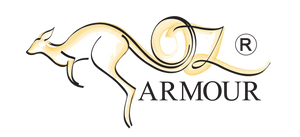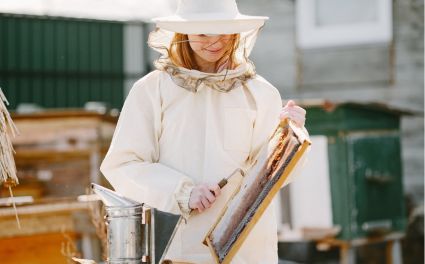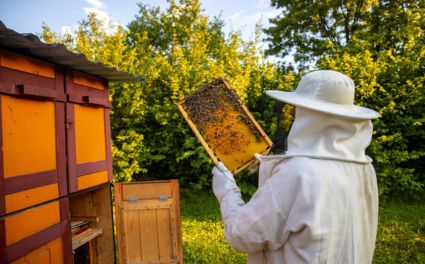Beekeeping isn’t just about collecting honey—it’s about making sure your colony stays strong and healthy. When nectar is scarce, feeding your bees sugar syrup can be the difference between a thriving hive and one that struggles to survive. But when should you feed them? What’s the right sugar-to-water ratio? And what feeder should you use?
Let’s dive into the world of bee nutrition and explore the best ways to keep your bees well-fed throughout the year.
Why Do Bees Need Sugar Syrup? When And Why To Step In?
If bees make honey, why do they need sugar syrup? While honey is their natural food source, there are times when they simply don’t have enough. Harsh weather, nectar shortages, or late-season hive splits can leave colonies dangerously low on reserves. This is when beekeepers step in with supplemental feeding.
So, when should you feed bees sugar syrup? Here are the key moments:
Spring Buildup: Helps colonies expand by encouraging brood rearing.
Late Summer Dearths: Provides essential carbohydrates when nectar is scarce.
Winter Preparation: Makes sure bees have enough stores to survive the cold months.
👉 Don’t forget to gear up properly during feedings with beekeeping suits and beekeeping gloves for maximum protection and comfort.
Timing is crucial—feeding at the wrong time or in the wrong way can disrupt the hive’s natural cycle. That’s why understanding sugar syrup ratios is so important.

What’s The Right Sugar Syrup Ratio For Bees? Adjusting For The Seasons
Did you know the concentration of sugar syrup changes depending on the season? Different times of the year call for different feeding strategies.
Here’s what you need to know:
-
1:1 Ratio (Spring Feeding): Equal parts sugar and water mimic natural nectar, encouraging brood production and colony growth.
-
2:1 Ratio (Fall Feeding): A thicker mix (two parts sugar to one part water) helps bees build up winter reserves faster.
-
Fondant or Dry Sugar (Winter Emergency Feeding): When it’s too cold for liquid feeding, placing dry sugar or fondant inside the hive ensures bees don’t starve.
Using the right sugar-to-water ratio at the right time supports colony health without overstimulating brood production when it’s not needed.
What’s The Best Bee Feeder? Picking The Right One For Your Hive
With so many feeder options, which one should you choose? The best feeder depends on your hive setup, climate, and colony size.
Let’s look at the pros and cons of different feeders:
-
Entrance Feeders: Easy to use and ideal for small-scale beekeeping, but they can attract robbers.
-
Hive Top Feeders: Placed inside the hive, reducing the risk of robbing and allowing bees to feed in cooler weather.
-
Frame Feeders: Installed inside the brood box, making them great for winter feeding when external feeders aren’t practical.
-
Bucket Feeders: Positioned over the inner cover, they provide large amounts of syrup with minimal hive disturbance.
👉 Want a complete setup? Explore our beekeeping kits with suits to get everything you need in one go.
How To Feed Bees In Winter Without Harming Them?
Winter feeding requires extra care. Since bees cluster to conserve heat, they won’t move far to access food. If their reserves run low, they need an accessible backup food source.
Here’s how to feed bees in winter without causing harm:
-
Use sugar bricks or fondant placed directly above the cluster.
-
Keep the hive insulated with a bee cozy winter hive wrap to maintain warmth.
-
Control moisture buildup to prevent deadly condensation inside the hive.
If you live in colder climates, you might also benefit from a ventilated beekeeping suit designed to keep you comfortable during hive checks year-round.
Spring Feeding: Kickstarting The Colony After Winter
After winter, bees need an energy boost to start foraging and expanding their brood. Spring feeding is all about stimulation rather than survival. A light 1:1 sugar syrup encourages the queen to start laying eggs. Some beekeepers also add pollen substitutes to provide protein for growing larvae.
To make spring feeding easier, try a feeder bee frame for easy hive integration and maximum accessibility.
How To Feed Bees Sugar Syrup The Right Way: Best Practices For A Healthy Hive
Feeding bees isn’t just about pouring sugar water into a feeder. There’s a strategy behind it.
Here are some expert tips to make sure your bees get the nutrition they need:
-
Avoid Open Feeding: It attracts robbers and pests while increasing the risk of disease transmission.
-
Use Enclosed Feeders: This keeps the syrup safe and minimizes the chance of contamination.
-
Check For Mold: Sugar syrup can ferment quickly, especially in warm weather. Always refresh feeders regularly.
-
Reduce feeding before honey flow. If you’re harvesting honey, stop feeding early to make sure no sugar syrup contaminates your honey crop.
And remember, use a beekeeping smoker during feeding or inspections to keep your bees calm and manageable.
When To Stop Feeding Bees: Letting Them Do Their Job
When should you stop feeding your honey bees? Once natural nectar flow picks up, bees should be gathering their food. Overfeeding can lead to sugar syrup being stored instead of real nectar, which affects honey production.
A good rule of thumb is to observe their foraging behavior—if they’re actively bringing in pollen and nectar, it’s time to scale back supplemental feeding.

Feed Smart, Keep Your Bees Healthy!
Every beekeeper wants a strong and productive colony. Feeding bees sugar syrup can be an important tool, but only when used correctly. By choosing the right feeder, monitoring seasonal needs, and following best practices, you can make sure your bees stay healthy without unintended consequences.
For top-quality beekeeping equipment, including beekeeping veils, 3-layer khaki beekeeping suits, and pink beekeeping suits for added style and safety, explore OZ Armour’s collection.
👉 Read more blogs about beekeeping to stay informed and support your hive year-round.




